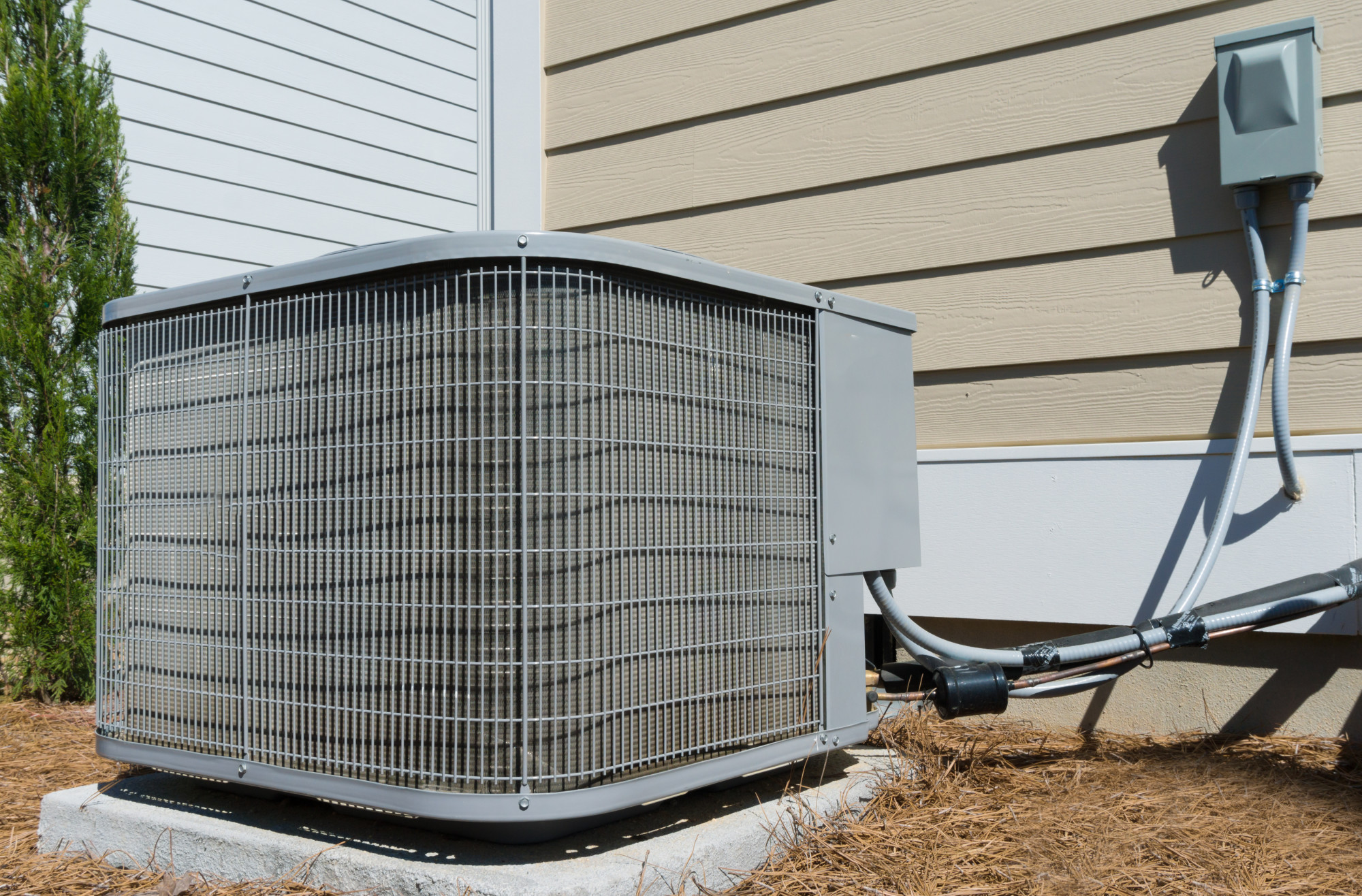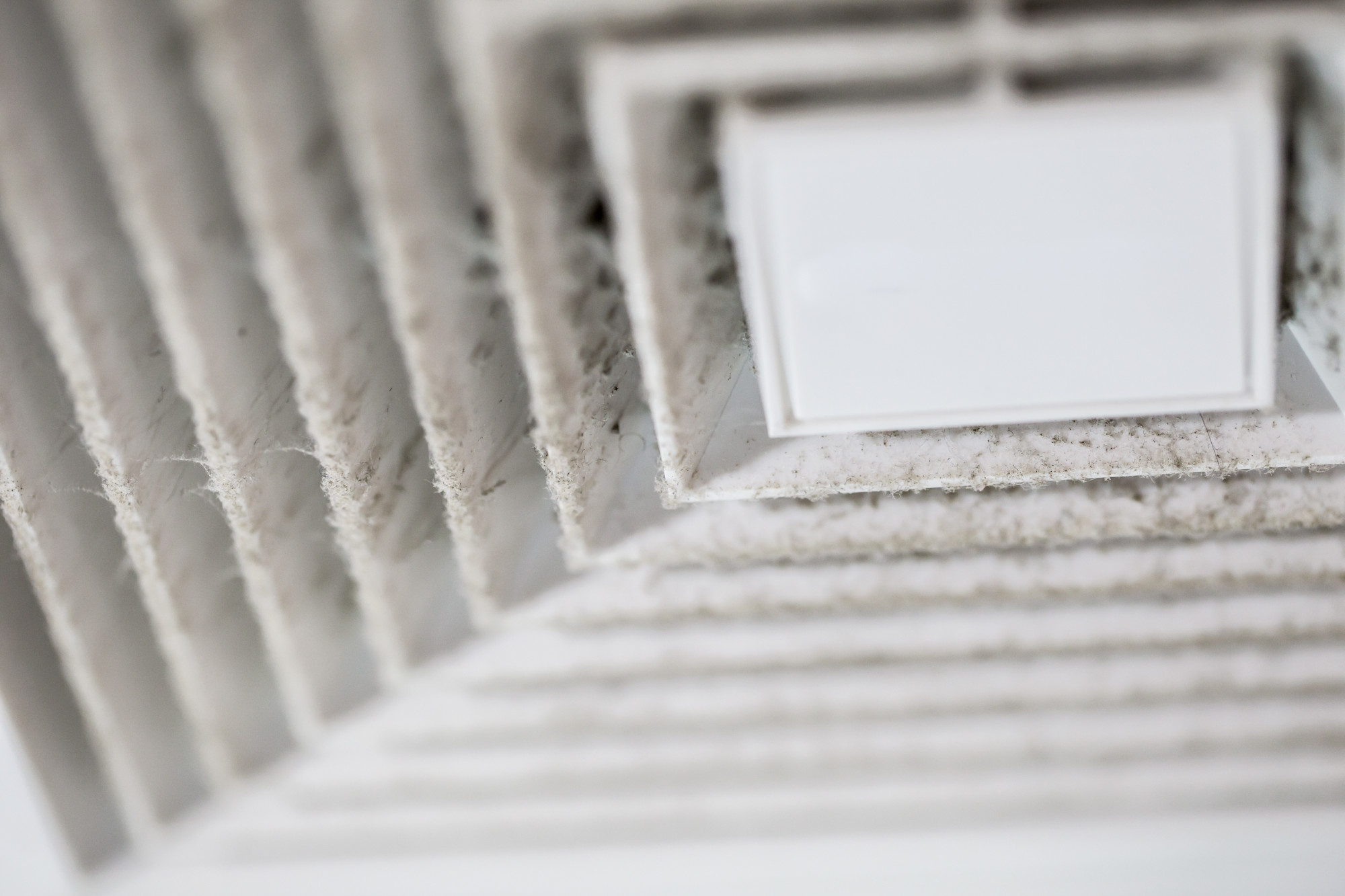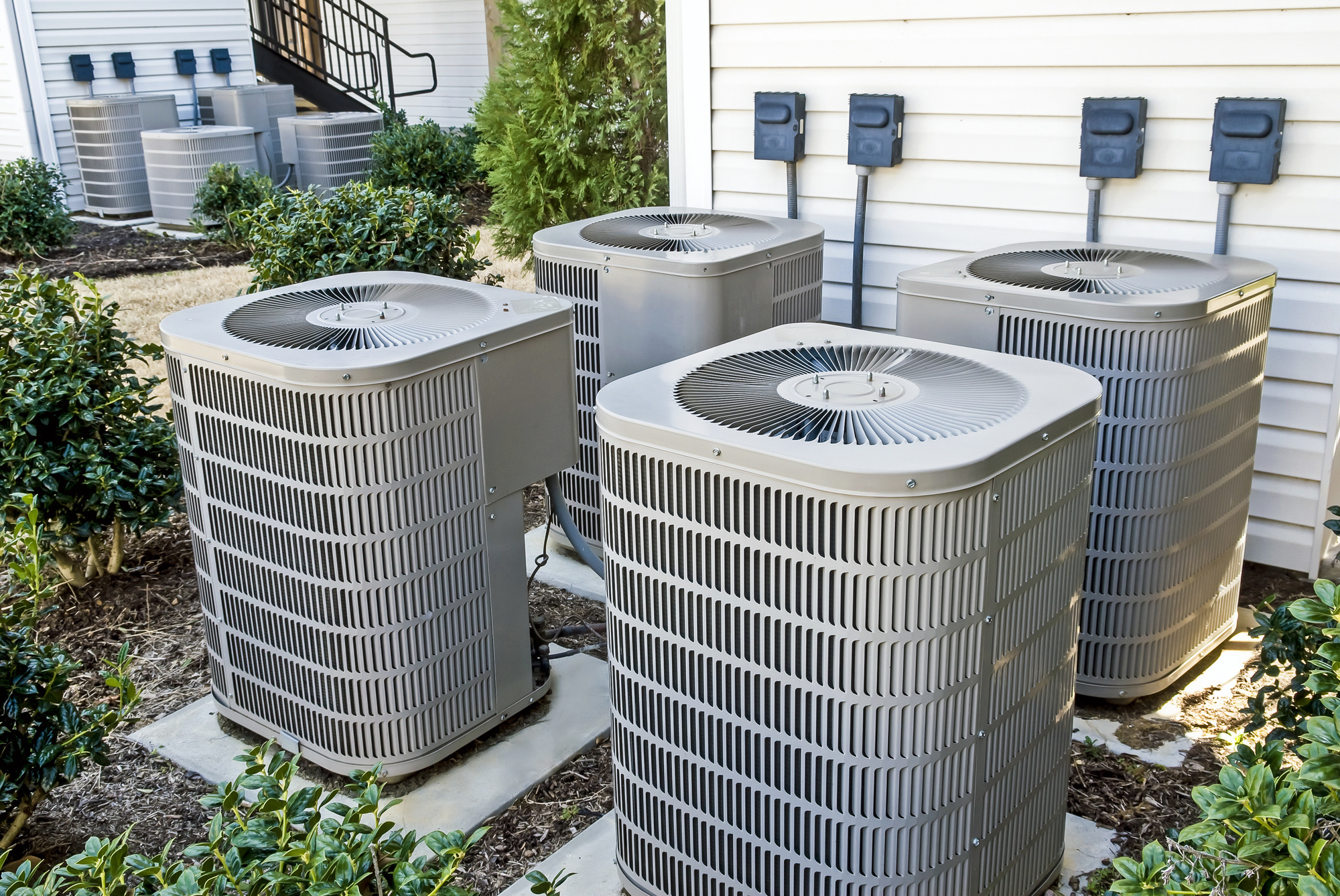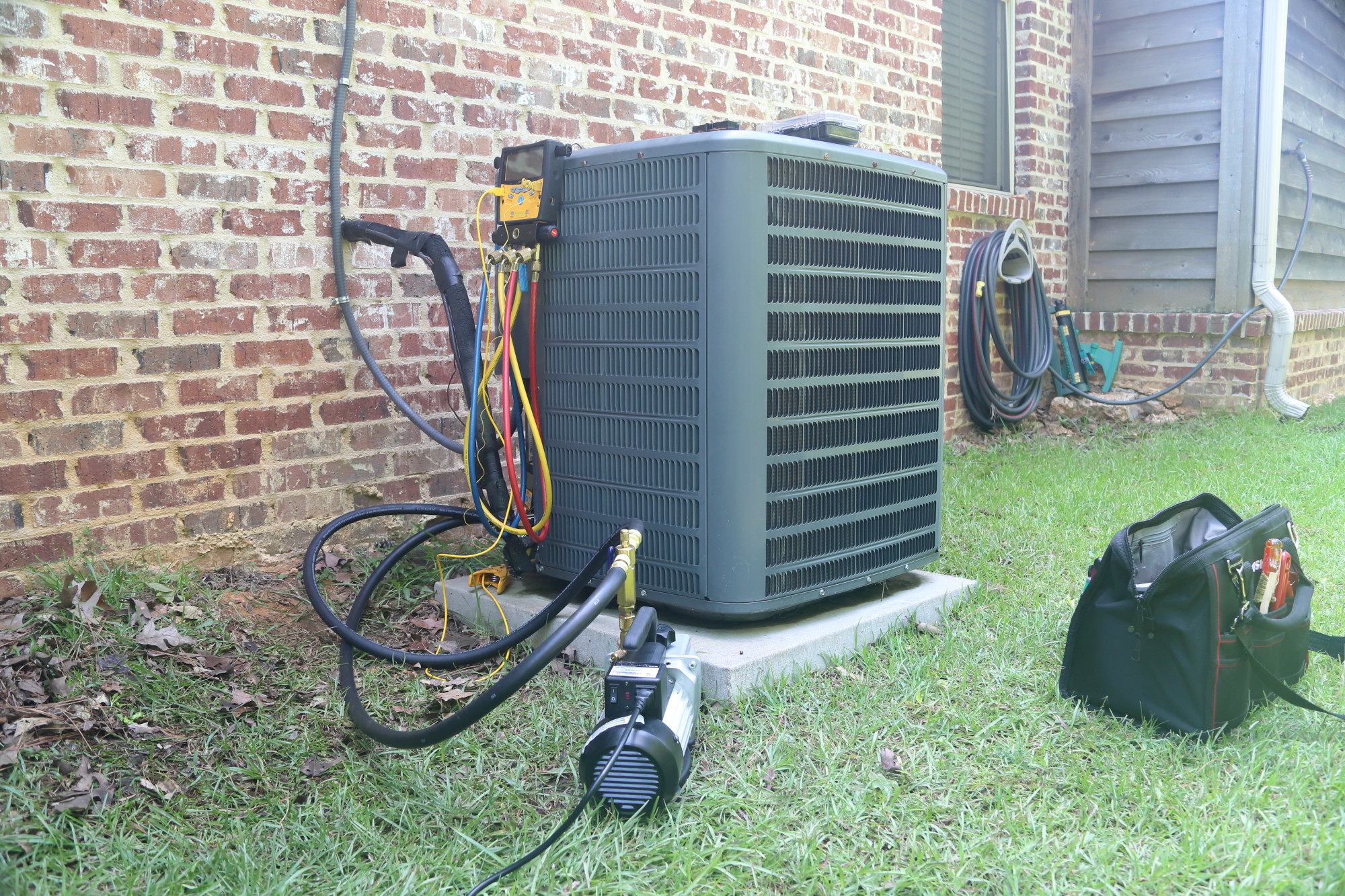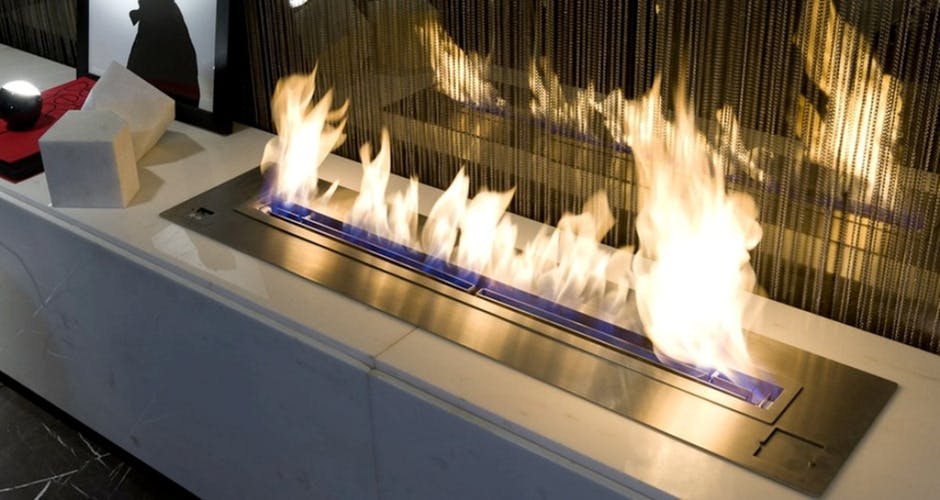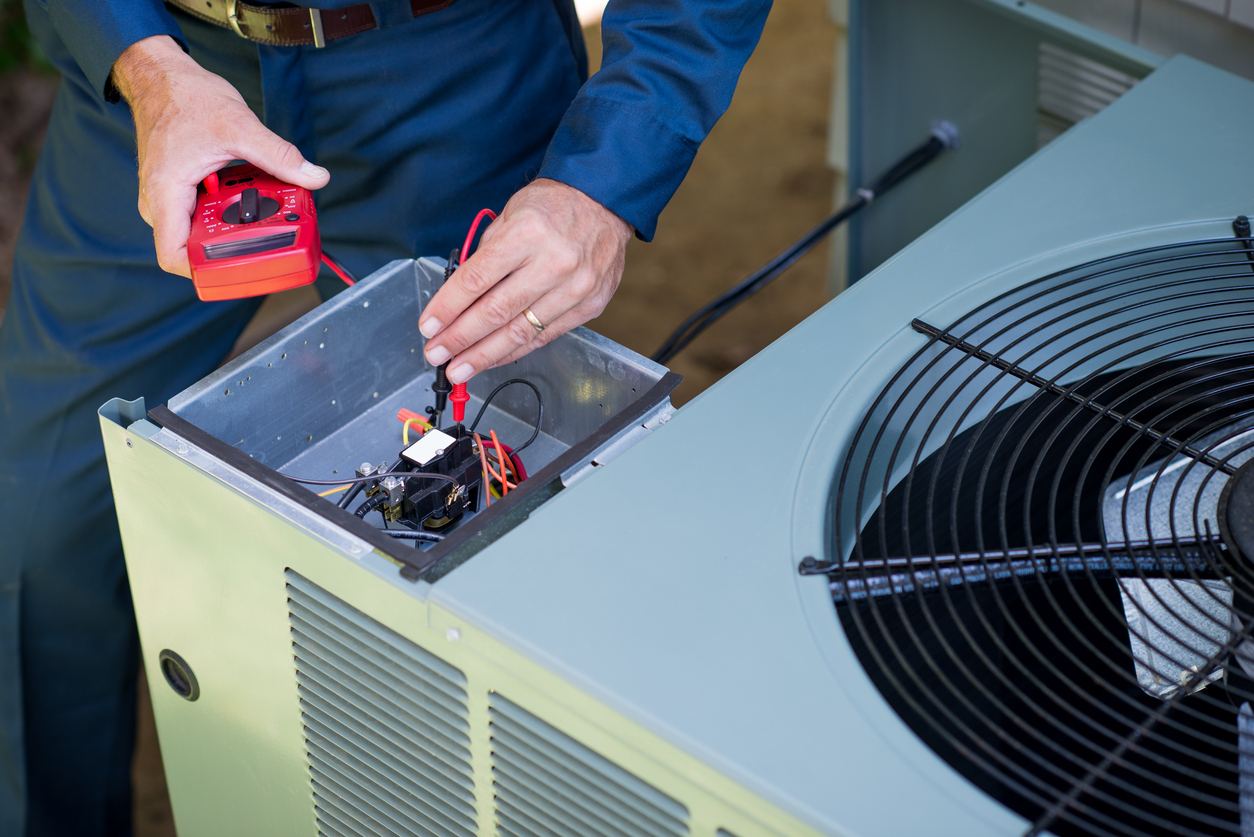Should I Cover My A/C Unit in the Winter? Your Question Explained
The summer may seem far away, but it'll be here sooner than you think. And once that heat starts ramping up, you're going to want to make sure your home is cool and comfortable.
In the meantime, though, your A/C unit likely is a bit colder than that. We'll go over some winterizing tips that can keep your HVAC system in tip-top shape come summertime.
Covering Your A/C Unit
The first question you need to ask yourself is, "how old is the A/C unit?"
Modern outdoor A/C units are manufactured to endure weathers of all different extremes. Your A/C box (the condenser) is built specifically to stand up against all but the most extreme highs and lows of weather.
The same goes for the internals. Each coil is weather-tested and should manage well.
However, as mentioned at the beginning, how old is your machine? Technology in this field has advanced handily in the past 10-20 years and means that older units may be prone to leaks, cracks, or breakdowns as a result of a variety of factors.
More Than Rain Falls into Your A/C Unit
Consider the location of your external A/C unit. Likely if you're in the Houston area, you don't see much snowfall annually, meaning you don't have to worry about an abundance of snowmelt flooding your system.
That doesn't mean you're out of the woods yet. In fact, if you live in a densely forested area, or your A/C unit sits beneath trees, you'll need to take extra care of it.
Leaves, pine needles, bird nests, seeds, and other debris that falls into an A/C unit can impede its functionality. Leaves and seeds particularly sap up moisture and create a dangerous environment for the inner parts.
And with over 33 million trees in the Houston area, there's a good chance your A/C unit is at risk. Thus when the leaves start turning, it's a good bet that you should cover the unit to ensure these unwanted guests stay out.
Similarly, if over the winter you notice a lot of debris falling into your unit, invest in a cover for your system.
Air conditioner repairs are par for the course in Houston, but a cover can help prevent unnecessary expenses. All in all, having a cover for your A/C unit can't hurt your machine.
... In most cases.
Each Cover is Not Equal
Covers for an A/C unit need to promote airflow. Restrictive covers, especially plastic coverings can restrict this. If your A/C unit doesn't have enough airflow, moisture can build up and actually promote rust and internal damage.
They also can encourage critters to stay for a night or more.
If you decide to purchase a cover, ensure it's breathable and primarily functions to keep water and debris from falling into the unit.
If it does that, without making for a cozy nest or moisture-machine, you'll be in the clear.
Ways to Preserve Your HVAC System
There are two ways you can help cover and protect the unit. The first is to purchase an A/C unit cover. There are many factory-made options that will offer just about any color and style you'd like.
Ensure they have breathability and won't increase the risk of rodents or pests making your system their home.
The other option is you could DIY a cover. You don't want to cover the entire unit. In fact, because covers only need to come down about six inches on the sides, it's fairly easy to find old materials to protect your unit.
Flexible sheets or cloths are good for providing breathability and keeping out seeds, leaves, and the like. Just make sure to take them off if there's a storm brewing, as they will retain moisture and do more harm than good.
Another option for the fall season is using a piece of plywood and holding it down with a brick. This reduces airflow some, but as long as the sides are uncovered the coils and interior should be able to breathe.
Preventative Maintenance Tips
At the start and end of seasons, check your A/C unit to ensure there are no nests, debris, or critters living inside. A quick check can help you take the appropriate next steps.
Clean Up the A/C Unit
Prior to performing any maintenance or going inside the unit, make sure to turn of the system.
If you see dirt, dust, bird droppings, bugs, or anything that could gunk up the machine it's wise to clean it out. Choose a warm day, one where the unit will be able to dry completely in the sun.
Using only warm water, get rid of any of the debris or residue that may have built up inside the machine. Do your best to dry wherever you cleaned to ensure moisture and mold can't build up inside.
Check for Damages
Once you've cleaned your A/C unit, check the wires. If you found animals living in your unit, it's possible they chewed on the wires. Occasionally there will be no trace of an animal except for these damaged wires.
Naturally, that's a problem and may require further repair.
Once you've checked wires, check any exterior piping leading to the unit. These pipes should have foam covers or some protective coating to ensure they don't freeze.
If they don't, or they're damaged, you can purchase pipe covers and wrap them in duct tape to ensure they stay freeze-free.
Check After Storms
If there's a hail or ice storm, check on your A/C unit. Brush away any ice or snow that may be lingering to look for damages.
So long as you do this during the extreme seasons, your unit should last you a long time.
Services and Repairs
HVAC systems are complicated. Regular maintenance is crucial to keeping them in tip-top shape, and a cover can help with that.
And if you find damages or need a tune-up, we service the Houston area. Contact us via call, text, or email with any questions you may have so that your home keeps cool when it's hot, and hot when it's cool.
7 Signs Your HVAC System Needs Air Duct Cleaning in Houston TX
In the U.S., we spend about 90% of our lives indoors. That means the average person spends about 21.6 hours inside every day.
If you don't have easy access to the outdoors, you could spend all your time indoors.
The trouble is, indoor air can carry up to 5 times as much pollution as the fresh air from outside. Indoor pollutants can include things like pet dander, cigarette smoke, mold, lead, and asbestos.
Luckily, cleaning your air ducts can make a big difference. Read on to learn the signs you need air duct cleaning in Houston, TX so you can breathe a sigh of relief.
1. You See Dust Coming From Your Air Vents
If you turn on your heat or air conditioning and you see a puff of dust or smoke come out of the vent, that's a sure sign your air ducts are dirty. When things are working properly, you shouldn't see or smell anything coming from the vent.
If you'd like to check your system, switch your heat or AC off. Wait a few minutes and turn it back on. Do you see any dust particles or smell something smokey coming from your vents?
If you see dust, you should schedule a professional cleaning soon. If you see or smell smoke, try not to use your system before a technician can come look at it. You could have a clogged air duct or a mechanical issue with your HVAC unit.
2. Your Energy Bills Are Going Up
It's normal for your energy costs to fluctuate from month to month. But, if there haven't been any major weather changes and your bill has gotten much more expensive, it could be an issue with your HVAC system.
First, check your utility bill for any new fees or service charges. Then, ask yourself if you've used a lot more energy in the past month. For example, a new hot tub could boost your monthly energy bill by as much as $50.
Once you've ruled those things out, you could have an issue with your air ducts. If your ducts are clogged with dust, your system will have to work harder to heat or cool your home. If you've noticed a change in airflow in a particular room, you could even have a blockage in your ductwork.
3. Your House Is Always Dusty
Dust is inevitable in an indoor environment. Every few weeks or once a month, you might need to pull out your microfiber cloth or feather duster to keep your home looking fresh.
But, if it seems like you're constantly battling dust bunnies when your cleaning schedule hasn't changed, your duct work could be the culprit.
Hot and cold air travels from your furnace or air conditioner, through the ductwork, and out of the vents in your home. The more dust that builds up inside the ducts, the more dust that will come out of your vents. It will settle on hard surfaces and make your house dustier.
4. You've Just Renovated Your House
Renovation projects are exciting, but they're also bad for indoor air quality. Whether you're renovating the kitchen, taking down a wall, or getting a new tile floor, expect some dust.
The trouble really starts when that dust from construction makes its way into your air ducts. You'll keep breathing in those cement or paint particles until you get your ducts cleaned.
Luckily, you and your construction crew can prevent some of this dust in the first place. Depending on the renovation, you can put covers over your vents. You can also rent an air scrubber and ask the crew to install plastic sheeting around the renovation area of your home.
5. Your Vent Grilles Look Dusty
Your vent grilles control the direction of airflow in your home. They also cover up the large vent holes in your floor or ceiling. You can also use your vent grilles to spot problems with your air ducts.
If you notice a lot of dust on your vent grilles, there's a good chance it's coming from inside the duct. Walk around your house to check your other vents. Do they look just as dusty?
If you're noticing dusty vent grilles throughout your home, you could have a widespread issue with your ducts. Contact an HVAC service company for maintenance as soon as you can.
6. Your Family Is Having More Health Problems
Indoor air quality issues can lead to allergy systems, asthma flare ups, itchy skin, and respiratory infections. If it seems like you or your family members have new or worsening allergy symptoms this year, think about your air ducts.
Between allergies, cold, and flu season, you might notice more coughing and runny noses than usual. But, if you're noticing ongoing symptoms, you might want to look at your air ducts.
If dirty air ducts were to blame, your symptoms might improve in just a few weeks.
7. You Notice a Musty Smell Throughout Your Home
If you're noticing a widespread musty odor throughout your home, it could be coming from your air ducts. If your AC system can't keep humidity in check, it can lead to mold growth.
Mold and mildew growth can also cause respiratory issues, just like dust can. Plus, if you don't address it soon, it can keep growing and spread throughout your ductwork.
To check for mold yourself, remove the grille cover and get a flashlight. If you see signs of mold, reach out to a technician who specializes in indoor air quality and mold removal.
Hire a Pro to Handle Your Air Duct Cleaning in Houston, TX
Dirty air ducts can make your house harder to clean, raise your energy bills, and even cause health problems. Since we spend so much time indoors, it's critical to think about the air we're breathing. If you've noticed any of the above warning signs, it might be time for air duct cleaning.
But, air duct cleaning is more than dusting the inside of your air vents. It requires special air duct cleaning tools and expert knowledge of HVAC systems. That's why it's best to leave it to the pros.
If you're looking for air duct cleaning in Houston, TX we can help. At P&M Air Conditioning and Heating, we offer indoor air quality solutions to make your home safer and cleaner. Contact us today to schedule a repair or get a quote.
Do You Need a Permit to Replace Your HVAC in Houston TX?
It's hard to underestimate the importance of good HVAC in Houston, TX. When it gets hot, you need something working to keep your home at a manageable temperature.
That said, HVAC systems work only has hard as the weather is hot. So, living in a hot climate means that your system is working hard most of the year, and you're going to see some wear and tear over the years.
It might be tempting to try and replace your HVAC system yourself and save some money. We're going to talk a little bit about how to move forward with getting a new HVAC installed in this article.
Replacing Your HVAC in Houston, TX
We hate to break it to you but installing an HVAC system without a permit is illegal in Houston. This may seem like kind of a hindrance to your home improvement, but it's the case for a couple of good reasons.
The first reason is that shoddy HVAC installation can lead to a number of health issues for you and your family. The air that you breathe is tantamount to your health. Issues like mold and other pollutants can really harm you.
Additionally, the people that live in your home after you will have the peace of mind that the air they're breathing isn't toxic. Further, this law makes it so that anyone you hire to do HVAC work for you will be certain to have the permit to do so.
That means you aren't paying for bad or dangerous work. It would be easy to miss the quality of a contractor's work when it comes to HVAC systems, too. So long as your home is kept cool, how would you know the difference?
This is why Houston also requires that a city inspector takes a look at your work after it's done.
City Inspection
So, the process is twofold. You or your contractor have to have a permit to do the work, and that work needs to be inspected when it's done.
The nice thing is that these inspections are relatively short, and you can simply schedule them to line up with the completion of your work. In fact, the city inspection takes around 30 minutes.
The part that might be a nuisance to you is applying for and paying for the permit. You have to contact the city of Houston in advance of any work that you do and make sure that you're approved before you start.
The fee of the permit will depend on the nature of the work and the price that you charge the customer. If you're working on your own, those fees might be different depending on your particular project.
In light of the hoops that you have to jump through, it might be simpler to skip the work on your own and hire an HVAC professional.
Need Some HVAC Help?
Working on your HVAC in Houston, TX might require a little more paperwork than you're interested in doing. Instead, hiring a professional to do the work can take your mind off of permits and inspections.
We’re to help you through all of that red tape and get you set up with a system that’s safe for you and your loved ones. Contact us for more insight into what's possible for your new HVAC system.
No More HCFC-22: What to Know About the R-22 Refrigerant Phase Out
Did you know that since the 1970s, a huge ozone hole above Antarctica has been opening every spring? What's more, some areas of this hole showed a depletion of the ozone levels by as much as 65%!
Researchers also found that the hole grew to a size as big as North America. That’s about 25 million square kilometers!
The main culprits, according to scientists, are chlorofluorocarbons (CFCs), particularly hydrochlorofluorocarbons (HCFCs). These include the R-22 refrigerant used by most air conditioners back then.
Because of this, the Environmental Protection Agency (EPA) has ordered the R-22 phase-out. As of January 01, 2020, it's illegal to produce or import most HCFCs, including the R-22 Freon.
The question is, what does this ban have to do with you as a regular HVAC user? What is Freon anyway?
We'll answer all these questions (and more), so go ahead and read until the end!
What Is R-22 Refrigerant?
R-22 is the most common form of the HCFC-22 chemical, a type of Class II ozone-depleting substance. You likely know R-22 through the brand name "Freon".
As a refrigerant, HCFC-22 is the chemical that heats or cools the air that HVAC systems produce. When this fluid passes through the parts of the HVAC unit, it changes into either liquid or gas.
These transformations then make the refrigerant hot or cold. These changes make the chemical quick to absorb or radiate heat from the passing air. This is how your HVAC system cools or heats your home.
R-22 was the most common type of refrigerant used in HVAC equipment up until January 01, 2010. At this point, the EPA banned its production, import, and use except for existing equipment.
Meaning, if you have an HVAC system manufactured before January 01, 2010, then it likely uses R-22.
Determining What Type of Refrigerant Your HVAC System Uses
If you're unsure of your HVAC unit's manufacturing date, check the label on the compressor. This is the part usually installed outside of the home. The label will clearly tell you if it uses R-22 (HCFC-22) or R-410A (the refrigerant used in newer units).
What’s in Store for Homeowners With R-22 Air Conditioners
The January 2010 ban still allowed the production and use of HCFC-22 for existing units. This exception lasted up until December 31, 2019. This is how owners of HVAC systems that made use of R-22 were still able to get their units recharged.
However, as of January 01, 2020, the EPA has completely banned the production and use of HCFC-22. HVAC systems that still use R-22 would have to rely on "recycled" or "stockpiled" R-22 supply.
If you still have an R-22 AC unit, then you can expect higher refrigerant “recharge” costs. After all, the EPA ban means that the R-22 will become even scarcer than it already is. This scarcity will then drive up the cost of HVAC refrigerant "recharges".
In most cases, air conditioners need a refrigerant charge due to leaks. One solid sign that you have a leaking refrigerant is if your AC unit freezes up. An HVAC technician needs to seal this leak and then top up the refrigerant to make your AC work again.
However, now that the R-22 ban is in place, expect this HVAC repair job to be more expensive.
What You Can Do Now
Having an R-22 HVAC unit doesn’t automatically mean you need a new system right away. Again, the law still allows the use of such equipment. If you can't replace your current HVAC system at the moment, then make sure you at least do the following.
Regular HVAC Maintenance
You can prevent refrigerant leaks in the first place through proper HVAC maintenance. Many leaks occur due to corrosion, which can result from dirt and debris accumulation. Cleaning evaporator and condenser coils regularly can help keep corrosion at bay.
Prompt Repairs for Potential Refrigerant Leaks
Not enough cool air, frozen coils, and weird sounds are symptoms of refrigerant leaks. If you notice these signs of HVAC trouble, have a licensed HVAC technician inspect your unit ASAP. It's possible that there's only a tiny leak that the technician can still seal and repair.
Prompt repairs can prevent more of the pricey R-22 refrigerant from leaking out. This can then help extend the life of your R-22 air conditioning unit.
The Best Way to Address the R-22 Phase-Out
Granted, air conditioners can last between 15 to 20 years. This is also one of the reasons that the HCFC-22 ban still allows for the use of "recycled" R-22.
While you can still use your R-22 AC despite the ban, it doesn't mean that you should. Especially not if your current air conditioner is more than a decade old. Aside from likely being an R-22 user, such old units are more prone to breakdowns.
Over time, the repairs for these HVAC problems will add up to a considerable amount. The repair costs could be so high that it makes more sense to just get a new HVAC unit.
Besides, older HVAC models aren't as energy-efficient as the more modern units. By replacing your R-22 HVAC unit with an energy-efficient model, you can save 20% to 40% on cooling costs. These huge savings should be enough to make you consider getting a new HVAC system.
Time for a Change
As you can see, the R-22 refrigerant ban brings with it a host of changes that could affect your life as an HVAC owner. Despite its financial implications, however, this ban is actually great for the environment. That's why as early as now, you should consider swapping your old R-22-powered HVAC unit.
Ready to invest in an eco-friendlier, more energy-efficient HVAC system? Then let our team here at P & M Air Conditioning and Heating help! Connect with us now so we can discuss your new heating and cooling options.
7 Benefits and Tips for Buying a Trane Heating and Cooling System
Trane is a company that everyone knows. They have been around since 1913 but started making heaters before that.
Throughout the twentieth century, Trane continued to innovate. These innovations helped to revolutionize the HVAC industry and change the way we approached heating and cooling.
Here are both reasons to buy a Trane heating and cooling system, and things you should look out for that will help you in deciding your next purchase.
1. Trane Heating and Cooling Dependability
Trane units have a strong dependability rating. This is not a new reputation, as they have been notably dependable for a century. Trane heating and cooling units stand up as well or better than any other brand on the market.
Nobody wants their HVAC system to break down. If you buy a Trane, you will experience fewer breakdowns. They scored an Excellent Rating, the highest attainable rating by Consumer Reports. This rating was achieved based on a survey of over 20,000 customers.
The number one reason for heating and cooling breakdowns is the lack of routine maintenance. Remember that any unit you buy, from any brand, will need regular maintenance. Make sure that you get your unit from a company that can both install it and keep it running for you.
2. Excellent Warranty
Trane commonly ranks amongst the highest brands for customer satisfaction. One key to their incredible success is their warranty. While Trane heating and cooling systems break down less often than other brands, they have a reputation for always honoring their warranties.
Trane dealers are historically effective in repairing their units. This means that you can rest assured that if your unit does eventually break it will be repaired.
Their standard base warranty can last for up to 20 years depending on the part. Since most HVAC systems have a lifespan of only 15 years, you will be covered should something go wrong.
3. Get as Much Heating and Cooling as You Need
Trane offers a wide variety of models. These vary in size but make sure you are getting a system large enough for your home.
Remember that you don’t need to get an excessively large heating and cooling system either. Doing this will help you save both in the purchase of the unit and in the monthly bills associated with your HVAC system.
This will also help you reduce the amount of energy your home is wasting. Using a Trane means that you will have an efficient system from the beginning. Doing your part means you will save even more on your bills.
4. Trane Has Traditional Heating and Cooling Units and More
Buying a Trane doesn’t just mean using traditional heating and air systems. While these are extremely popular, Trane offers more.
You can even buy a Trane heat pump to help heat and cool your home. These units are greener and offer you savings in the form of monthly utility bills.
Not all of these alternative models may be appropriate for you, so make sure you do your research. If you happen to live in Texas, there are several notable HVAC experts for Houston heating maintenance that can assist you.
5. The Innovative Design of Trane Systems
Trane has been doing this for over 100 years. That means they have the experience and understanding of HVAC systems that few can match.
Trane heating and cooling systems are typically ahead of the industry standard. When you buy a Trane, you aren’t getting just some “regular” heating and cooling system.
You are getting a system that has been built from the ground up by Trane. Every component has been tested and checked. Your system will be efficient and functional.
This approach is unique to Trane. Trane has been innovating technologies for heating and cooling for their entire existence. In fact, that’s what they started off doing. They got their first patents for water-based cooling systems in the 1930s!
6. A Quiet System
Central heat and air units can be loud. In fact, you can often hear your neighbor’s unit from inside your house. It can sometimes sound like an engine is being revved or a jet is flying over at low altitude.
That can be both annoying and problematic.
Trane heating and air units are among the quietest in the industry. If you live in a residential area where the homes are close together this can be especially nice. Your neighbors won’t have to hear your system going through the hot and cold months.
7. A Tradition of Trust
Trane is often called America’s most trusted heating and cooling brand. They developed this because not only do they build dependable and better products, they partner with the best people.
This combination of high-quality product and high-quality service make the experience of buying a Trane unique.
In order to get the most out of this benefit, make sure that you purchase your unit from a company that has a lot of experience. This is the best way to get the most out of your heating and cooling system.
Get a unit you can trust from a company you can trust and you will be satisfied and save money at the same time.
Buying Your New Trane Heating and Cooling System
There are a lot of reasons to buy a Trane, and some things to keep in mind when you do.
The single largest help will be who you decide to purchase your Trane heating and cooling system with. Summers in the Houston area can be incredibly hot. They are also always humid.
P&M Air Conditioning and Heating has been in operation since 1947. Since the end of World War II, we have helped thousands of people be cool in the summer and warm in the winter.
In addition to estimating, installing and setting up your new system, we can also work on any problem you may have. The slogan of Trane is “Nothing Stops a Trane”. That has never been truer than when you have P&M Air Conditioning and Heating work for you.
Contact us today if you are in the Houston area and have any questions about a potential new system.
How Often Should You Schedule Heating System Maintenance?
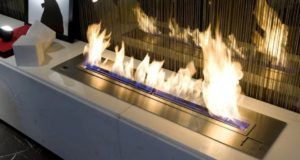
Most of us tend to take our daily comforts for granted, including a warm and cozy house in the cold winter months when the last place you want to be is outdoors.
Modern furnaces make it possible to hunker down for the winter and stay comfortable all season long. But if you've ever had your furnace break down, you understand how much you take it for granted and how quickly your home can become cold.
Maintaining your furnace year-round ensures that you won't have an unexpected breakdown when you need heat the most.
But how often should you get Houston heating maintenance done on your furnace? And what should you look for in a reputable technician?
Read on to find out:
How Often Should You Seek Heating System Maintenance in Texas?
Even in areas that are warmer than others, we all depend on our heaters to work when we need them to on those cold days. But how often should have your heater checked out to keep it running all year long?
Most furnace manufacturers agree than maintenance should be conducted on a yearly basis. In fact, your furnace warranty probably mentions that damage done to your furnace as a lack of regular maintenance will not be covered. This is reason enough to keep up on your annual inspection.
And though chances are good that your technician won't find anything wrong with your furnace, it's still better to aim for prevention than paying for expensive damage.
What Does an Heating System Maintenance Include?
There's no industry standard when it comes to Houston heating maintenance, but the best technicians have a checklist that they adhere to. A technician you can trust will do a number of things including:
- Check the venting system for any blockage that could lead to combustion or carbon monoxide. This is a very important step in the inspection because a blockage could lead to carbon monoxide poisoning of the house.
- Check all the safety switches to make sure they're functioning properly so that your furnace won't overheat and start a fire.
- Check all the burners to make sure they ignite.
- Look at the drainage system to see if it needs to be cleaned.
- Make sure all the wires are connected and free from corrosion.
- Check the gas pressures, flame sensor, ignitor, and burners.
- Check the filter for cleanliness or to determine if it needs replacing.
- Inspection of the heat exchanger.
What you want is a thorough, responsible technician to perform your Houston heating maintenance. If a technician comes and checks your furnace and calls it good in a matter of minutes, they probably weren't looking at your system as well as they should be.
There are plenty of technicians that charge a very cheap rate to check your heating system but keep in mind that you really do get what you pay for, and in most instances where the rate is low, they aren't going through a checklist like the one above.
What are the Benefits of Furnace Maintenance?
As we've already mentioned, a furnace that isn't serviced regularly can stop working without warning. But it can also be a health hazard. By having your furnace checked out every year, your technician can prevent potentially serious problems.
Carbon monoxide leaks, for example, are nearly impossible for the untrained person to detect since the gas is both odorless and colorless. Carbon monoxide leads to dizziness, headaches, nausea, and possibly death. Thousands of people head to emergency rooms every year due to carbon monoxide poisoning.
When you keep up-to-date on inspections, you significantly reduce the chances of carbon monoxide poisoning and keep your family protected.
Another benefit of bothering with an inspection is savings. Though you might be tempted to avoid the initial cost of inspection, it's a small expense compared to what you could end up paying in repairs. The difference can be hundreds of dollars in savings by opting for preventative costs versus big future repairs.
Inspections also save energy in the long run. Your technician can do most of the work for you, but as a homeowner, you can take charge by changing your air filters every three months to avoid clogged air filters and restricted airflow.
Be sure to ask your HVAC professional about the benefits of a programmable thermostat if you don't already have one. Having one in place can save you a chunk of change on your energy bills.
Newer Heating Systems Still Require Maintenance
Don't make the mistake of assuming you don't need to bother with maintenance because your system is somewhat new.
Your manufacturer will likely require you to keep up regular maintenance and keep a record of such before you can make any warranty claims. So it's not only important to keep those maintenance efforts going for the longevity of your system, but for the sake of your warranty as well.
Contact P&M Air Conditioning and Heating in Houston, TX to Schedule Your Maintenance Appointment
Now that you understand the importance of regular Houston heating maintenance efforts, give us a call today to schedule your next inspection.
We'll come to check out your furnace system to make sure everything is running smoothly and we'll answer all your questions along the way.
And don't wait until the cold weather is already upon you! Take advantage of our professional services right away so you can rest easy knowing your home is ready for winter and the air you're breathing is safe and sanitary for months to come.
4 Benefits of Having Your HVAC System Maintenance Done
One of the best things that Houston homeowners can do to make sure that their heating and cooling units stay healthy is to conduct regular HVAC maintenance. You need to keep in mind that your HVAC system is the heart and soul of your home’s comfort. You can be in quite a predicament if your system isn’t functioning properly. The best time to conduct this maintenance is in fall for your heating equipment and spring for your air conditioning unit. Proper maintenance of your HVAC system is a worthwhile investment that you shouldn't ignore. Here are the top four benefits of having your HVAC system maintenance done.
1. Cut Your Energy Bills
The US Department of Energy reports that heating and cooling accounts for more than 48 percent of your overall home’s energy bill. This is the primary reason why you need to make sure that your system is operating properly and optimally. Typically, your system will consume a lot of energy if it is overworking to achieve the desired results. Keeping your HVAC system in top-condition through proper maintenance will cut down your energy usage and make you save a lot of money on your monthly energy bills.
2. Enhance Air Quality
Typically, as the conditioned air travels throughout your ductwork, it usually carries with it loose particulate matter that wasn’t trapped due to clogged air filters or dirty system components. Some of the common contaminants that may build up in your ductwork include bacteria, pet dander, pollen, dust, and mold. With time, these contaminants will start to create unhealthy conditions in your home that trigger allergy symptoms. Proper system maintenance ensures that your ducts and vents are always clean which lead to a higher quality of indoor air that you breathe.
3. Extend the Lifespan of Your HVAC Unit
The truth of the matter is that heating and cooling systems are expensive to acquire. However, without proper maintenance, your system might be damaged beyond repair forcing you to replace it with a new unit. One of the most significant benefits of HVAC maintenance is that it prolongs the lifespan of a heating and cooling system. Preventive maintenance will keep your HVAC system running efficiently for years to come. In fact, this is the only sure way of protecting your investment.
4. Avoid Unnecessary Repairs
Performing preventive maintenance at least twice every year will help you to stop certain issues even before they start. Technically, you will be lowering the probability of your system ever breaking down. This will minimize the number of times that you have to call an HVAC expert to come to your home to make repairs which also saves you a lot of money and protects your investment.
Cooling Services in Houston
Are looking for a qualified and experienced HVAC expert in Houston to help you perform HVAC maintenance? Contact P&M today and we shall gladly help you get the best out of your HVAC system. We are your #1 Houston heating and cooling service company that guarantees better home comfort. We are also experts in designing systems for every budget level and performance expectation. All of our technicians are experienced and licensed. Contact us today and let us help you take care of your home’s comfort needs.
What Does SEER Rating Mean?
Seasonal energy efficiency ratio (SEER) rates an air conditioner's efficiency. The Air Conditioning, Heating, and Refrigeration Institute defined it in 2008.
A machine's SEER rating is its cooling output in a typical cooling-season divided by its total energy input in the same timeframe. It is directly proportional to the energy efficiency of equipment. In America, it is calculated by dividing the British thermal unit (BTU) with the energy consumption in watt-hours. This is important in ensuring your equipment runs efficiently and effectively.
How Does SEER relate with EER and COP?
A cooling machine's energy efficiency ratio (EER) is calculated by dividing the output cooling power (BTU) with its input electrical power (Wh) at a particular operation point. To calculate the EER, you should use 95F external temperature, the internal 80F temperature and the 50% relative humidity.
EER is associated with the coefficient of performance (COP).It's common in thermodynamics whereby an air conditioners COP is a unit less than the EER. Also, EER uses several units as it is calculated by multiplying the BTU/h conversion factor by the COP.
Maximum SEER Rating
Some modern ductless air conditioners have SEER ratings 0f 33.also, other residential AC units have maximum SEER ratings of 75.However, a ground-source heat pump's effective efficiency depends on the water source temperature.
Usually, hot regions have a higher ground temperature than cold places hence not being able to reach such high efficiencies. Also, ground heat pumps' ARI rating enables them to function without reaching their maximum pump power. It reduces the SEER values to be below their highest efficiency. Moreover, there are varying technologies which permit EER and SEER ratings to increase. Some of them include inverters, DC motors, rotary compressors and variable speed drives.
Are you planning to purchase a new air conditioner? P & M Air Conditioning and Heating serve people living in Houston. We provide them with a variety of services including indoor air quality, heating and AC installation, comprehensive repair and maintenance services to enhance the comfort, efficiency, and lifespan of their equipment. Visit our Houston office for more information.

